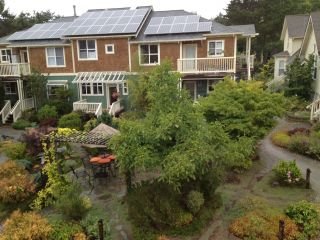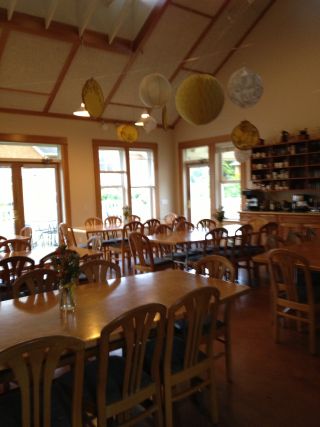Friends
The Secret to Balancing Time Alone and Time Together?
What happened in Denmark didn’t stay in Denmark
Posted August 13, 2013
Take a look at ads for places to live and you know what you will find – descriptions of the size, location, number of bedrooms, amenities, and everything else about the dwelling itself. All of that is important, maybe even essential. In studying how people find the living situation that is just right for them, however, I have found that these predictable ads are almost entirely silent on one of the issues that matters most, psychologically and emotionally. They tell us little about the opportunities for prospective residents to find the optimal mix, for them, of time alone and time with other people.
Just about everyone wants some of both. They want their sociability but they also want a measure of solitude and privacy. Different individuals vary enormously in the mix that is right for them. I’m way over on the side of liking lots of alone time. Many of the people I’ve interviewed for my new project are way on the other side – they want to be with other people a whole lot of the time.
One of the real joys of living in contemporary times is that we have more opportunities than ever before to find or design ways of living that fit our own psychological profiles. So one of the things I am doing in the new project is looking at different ways of living – for example, sharing a home with others (whether they are friends, family, or strangers who will become something like friends) or living on your own in a place that is not part of any self-conscious community.
I have also been wondering whether there are living arrangements that offer flexibility to a wide variety of people, so that those who want more time alone, and those who favor more time with others, and everyone in between, can all live within the same community and get what they want.
I don’t think I have found that place yet, but I am intrigued by the cohousing communities that began in Denmark in the early 70s and have now spread to many nations. In the US, there are well over 100 of them, and many more in the early stages of planning and development. I have visited cohousing communities in Oakland and Berkeley, and most recently, in Bellingham, Washington. (The pictures in this post are from Bellingham.)

Bellingham cohousing
People who choose to live in cohousing want something like a real community. Some create cohousing communities from scratch, finding blocks of land to build on and like-minded people to work with. In cohousing, individual people or groups of people have places of their own (homes, townhomes, duplexes, apartments, and so forth). These are not the communes of old in which everyone lives in the same big house and shares everything. (Also unlike older communes, individual members earn their own incomes at the same kinds of jobs anyone else would have; they do not try to make or sell products in the community in order to sustain the community economically.) The households could include any person or combination of people, whether that is one person living solo, a parent and a child, a couple, a nuclear family, an extended family, a group of friends, or anything else.
There is, though, a big house that is shared. The “common house” is one of the features that make cohousing special. It includes a dining room big enough to accommodate everyone in the cohousing community, a correspondingly big kitchen, and often other rooms, too. They could include a playroom for the kids, a music room, a library, an office, a meeting room, a lounge, a workshop, or anything else the community wants. There is usually a laundry room with several washers and dryers, a mailroom, and guestrooms.

The Common House at Bellingham cohousing
Most cohousing communities have community dinners at least once a week and often several times a week. (The Bellingham community has shared dinners occasionally, but they always have a coffee hour, every day at 10 am.) Community members volunteer to do the cooking or cleaning, so that no one person is always responsible. Coming to the shared dinners is not mandatory but most people want to share some meals. That potential for breaking bread together and just catching up, without having to host a dinner party or go out to dinner, is one of the appeals of living in a cohousing community.

Dining room in the common house
Cohousing communities do all of the managing of the community and the governing themselves. If you don’t want to do cooking for big group or clean up, you can contribute in other ways, such as by doing gardening or landscaping or other maintenance. You are, though, expected to contribute to the self-governing, by attending meetings in which the community members try to reach decisions by consensus. The governing model is non-hierarchical.
Cohousing communities are typically ecologically minded. Because the laundry facilities are in the common house, each individual dwelling does not need a washer and dryer of its own. With guest rooms in the common house, homes or apartments do not need extra rooms for visitors. Many big items, such as the tools in the workshop, are shared. (Each dwelling does include its own kitchen – the communities share only some meals.)
Building materials are often “green” and so are other ways of living in these neighborhoods. Structures sometimes include photovoltaic systems; in some communities, those solar panels generate more power than the community uses.
The communal dining area, laundry facilities, and mailboxes all contribute to the sense of community. People see each other spontaneously over the course of their days. The communities are designed to encourage sociability and neighborliness in other significant ways, too. Perhaps most importantly, the houses typically face each other around a stretch of green. Often, the homes include front porches. Cars are kept on the periphery. That way, the green spaces are safe for kids and welcoming to adults.
The potential for privacy is also part of the plan. If you are not in the mood to see other people, skip the shared dinners that week and hang out in the back of your home. Some residences include decks out back that face nothing but wide open spaces.
I’ll probably write more here about cohousing in the future. I’ve just mentioned a few of the basics in this post. Also, so far, I have only visited intergenerational communities but there are senior cohousing communities, too. In the meantime, if you are interested in more, you can check out this Psych Today Q & A with Katie McCamant, who co-wrote the book on cohousing.
For more pictures of cohousing, check out this post at my personal blog.




